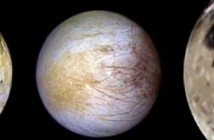Journey to Jupiter: NASA’s Juno Probe
Juno is the very first known solar-powered space investigatory equipment that is sent to explore the largest planet on the solar system, Jupiter. An in depth knowledge about Jupiter should help astronomers in understanding the huge planets that are now being identified orbiting some other stars.
Utilization of Space Probes
The introduction of the space probe has a number of missions. These missions include the following:
1. Enter the polar orbit of Jupiter to spend at least one year studying the deep structure of Jupiter and mapping the magnetic fields and gravity of the planet.
2. Juno aims to measure the water content within the atmosphere in order to find clues regarding the origin and formation of the planet.
3. It also aims to check on the sample auroras, plasma waves, particles and electric fields in the environment of Jupiter.
4. Taking photos in infrared, visible and ultraviolet light is also included in the mission of the space probe.
Probe Panels
In fact, the solar panels of modern probes now replace nuclear power. In 1989, there was the Jupiter probe Galileo, which contains the nuclear power generators. This has been replaced with the more modern probes including 2004’s Comet probe Rosetta and 2007’s Asteroid probe Dawn, which both use solar panels.
Generators
In the initial thirty years of space discovery, deep space probes utilized nuclear power generators in order to offer sustainable electricity for operation in the dark and cold outer solar system ahead of Mars. In the twenty-first century, the technology of solar power has developed enough that makes the panels appropriate for utilization on the spacecraft.
Juno threads a narrow path through the radiation inferno. Jupiter has exerted a potent magnetic field which traps radiation within the thick belt surrounding the planet. Juno takes the path that goes around the most powerful areas of that radiation belt in order to prevent frying up its electronic equipment. The probe’s closest approach to Jupiter is 5,000 km or 3,100 miles.
Science has gone too far after its four decades of exploring Jupiter. Juno has been the 9th probe sent from earth to Jupiter. In addition, it is the only 2nd probe that orbits the planet. Some of the previous and most recent probes sent to the biggest planet include the following:
• Launched in 1972, Pioneer 10 arrived in Jupiter on Dec. 3, 1973. Its mission is to flyby on the way to Saturn.
• Launched in 1973, Pioneer 11 has the same mission with the 10 and arrived in Jupiter on Dec. 2, 1974.
• Voyager is the 3rd one launched in year 1977, along with Voyager 2, with the mission to flyby on the way to Saturn, Uranus and Neptune.
• Galileo was launched on 1989, aiming to orbit Jupiter and drop the probe capsule.
• Ulysses is the next that is launched on 1990, which aims to flyby on the way to studying the sun.
• In 1997, it was Cassini, New Horizons in 2006 and finally Juno in 2011 that is now the polar orbit of Jupiter.
• Laplace is the probe expected to be launched on 2020 with the aim to orbit Europa (Jupiter’s moon) and try to identify its possibility to support life.




